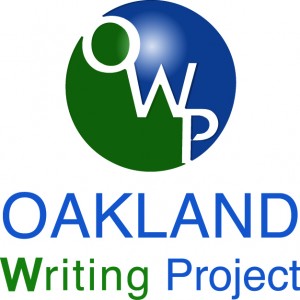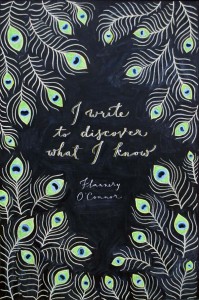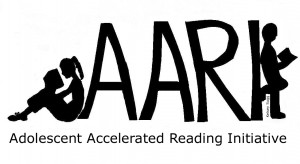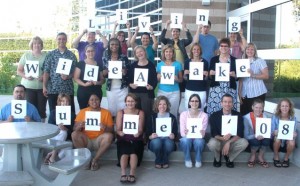I have a hard time finding time to write. I think about it, make notes in journals, and sometimes, sometimes, I finish something, but that something rarely gets in front of an audience. Maybe an audience of one or two gentle readers will take a peek but that’s it. I don’t get much feedback so I don’t really know how I’m doing. Teaching can be the same way. I do what I do, hope it made some kind of impact and move on. It can be frustrating and lonesome and, what’s worse I never know if I’m getting anywhere. No, I’m not looking for “points” or a grade–I am not my students–but I would like some kind of interaction. Writing and teaching can be very solitary which makes teaching writing downright monastic–not the ones who make beer, the ones who go off by themselves in search of enlightenment. The last two weeks in July, I crawled out of my teacher/writer cave and joined with a group of other pilgrims looking for some enlightenment or at least company. For those two weeks we talked about writing and teaching and we wrote, and shared what we wrote. I was teacher and student and writer and audience and I was happy. Here’s why:
 The Oakland Writing Project Summer Institute was lead by Richard Koch and Marcia Bonds. It focused on culturally responsive teaching but that was a springboard into our teaching practices and our habits as writers. This is a recent conversion for me, teacher as writer, working through all of the challenges alongside my students and it has lead to changes in how I think about my practice. I try to do more listening now, less talking; more growth, less grading. I learned that to be responsive I need to listen more carefully. I need to try and quiet the voices in my head so I can hear, and respond to my students’ voices. This can be hard, especially for a monastic type like myself, because I spend so much time in my own head, or in front of students who want to please me for a grade that they tend not to challenge me when I spout off. Those voices tell me, “Yeah, that’s right. That’s how to teach all these kids.” That’s a culture of one and it is not always helpful.
The Oakland Writing Project Summer Institute was lead by Richard Koch and Marcia Bonds. It focused on culturally responsive teaching but that was a springboard into our teaching practices and our habits as writers. This is a recent conversion for me, teacher as writer, working through all of the challenges alongside my students and it has lead to changes in how I think about my practice. I try to do more listening now, less talking; more growth, less grading. I learned that to be responsive I need to listen more carefully. I need to try and quiet the voices in my head so I can hear, and respond to my students’ voices. This can be hard, especially for a monastic type like myself, because I spend so much time in my own head, or in front of students who want to please me for a grade that they tend not to challenge me when I spout off. Those voices tell me, “Yeah, that’s right. That’s how to teach all these kids.” That’s a culture of one and it is not always helpful.
The Summer Institute taught me that those voices that I think are the “right” voices are simply the voices I respond to because they sound like me. The voices have had the same experiences I have so they’re familiar and have the ring of Truth, but not all my students hear those same voices, or if they do, they might not say the same things. How could they? My students come from a variety of cultures and experiences and it’s my job to help them give a voice in writing so they can express that unique culture and experience. Richard Koch likes the word “Namaste.” We talked about what it means–quite a few things apparently–and what we settled around was the idea that the light in me honors the light in you. (I know I’ve mixed my metaphors, voice and light, forgive me gentle ELA friends.) Being responsive doesn’t mean I agree with you or even I understand. It simply means that I’m listening, trying to hear your voice, to make a space where we can make sense of it. Writing and teaching at their core are ways to make a connection to another person. By learning to listen better, more carefully, I learn how to be a better teacher. This wasn’t something I could learn by myself. I needed to be a student, to sit in the learning chair. I spend a good deal of time in that chair. It’s humbling and that’s what I need.
 From my time in the learning chair one of the early prompts that stuck with me was a discussion of “peacocks” and “dragons” in our writing. It’s a metaphor for the beauty in the world that some people don’t have the patience to wait for, a peacock, and the things that frighten us but tend to produce good writing when we grapple with them, dragons. It comes from Flannery O’Connor, a writer not afraid of dragons, and I couldn’t stop returning to it.
From my time in the learning chair one of the early prompts that stuck with me was a discussion of “peacocks” and “dragons” in our writing. It’s a metaphor for the beauty in the world that some people don’t have the patience to wait for, a peacock, and the things that frighten us but tend to produce good writing when we grapple with them, dragons. It comes from Flannery O’Connor, a writer not afraid of dragons, and I couldn’t stop returning to it.
Dragons: I wondered if, in becoming more culturally responsive, I should try to rid my classroom of dragons. Should I fill it with peacocks and wait for the joy to follow? I’m not really a peacock guy. I love beautiful writing but what I think I want is to create dragons. That’s how I tend to choose many of the texts that we work with. How many dragons are there? How skilfully has the writer confronted them. I look for craft dragons and theme dragons, and I do get some complaints. At times I’ve heard that a text is too “difficult,” the use of language too challenging, too hard to follow. This is a craft dragon and tends to be hard for students because the struggle is with the decisions the writer is making about how to tell the story; that’s where these dragons lurk. Craft dragons challenge students to work hard as readers and consider how hard they are willing to work. These dragons take sophisticated skills and patience to defeat. Craft dragons challenge students to think about themselves as readers, writers and students. The poor student who never confronts a craft dragon never knows their own character, their own strength as readers of “hard” stuff.
 Theme dragons…these beasts are so fierce. They can linger, haunt a reader. Shy away from a craft dragon–I struggle with stream of consciousness–and probably it won’t make a difference in your life, just avoid it. Fear of theme dragons is something different. There’s been a lot of conversation about so called “trigger warnings” for academic content that might disturb students. (This book has been rated TD for “Theme Dragons.”) Those triggers, those are dragons. They are born in culture and experience, things to be listening for and responsive to. They lurk in ideas of gender, politics, sexuality, morality, ethics, religion, and relationships of all kinds. Harder to confront because they are deep seated and engrained, they challenge who we are, or think we are–but isn’t that why we read, to find out who we are–so the battles are bloodier and tend not to have clear outcomes. These fights linger.
Theme dragons…these beasts are so fierce. They can linger, haunt a reader. Shy away from a craft dragon–I struggle with stream of consciousness–and probably it won’t make a difference in your life, just avoid it. Fear of theme dragons is something different. There’s been a lot of conversation about so called “trigger warnings” for academic content that might disturb students. (This book has been rated TD for “Theme Dragons.”) Those triggers, those are dragons. They are born in culture and experience, things to be listening for and responsive to. They lurk in ideas of gender, politics, sexuality, morality, ethics, religion, and relationships of all kinds. Harder to confront because they are deep seated and engrained, they challenge who we are, or think we are–but isn’t that why we read, to find out who we are–so the battles are bloodier and tend not to have clear outcomes. These fights linger.
I don’t mean to imply that all we read in my class is heavy, soul baring tomes about BIG issues, but don’t we find these dragons everywhere, even in humorous texts? Don’t they lurk in unlikely places? The concerns I hear about these dragons often centers on the “appropriateness” or “maturity” of the themes. I understand these concerns and they do affect how I choose texts and I have shied away from dragons I think my students are just not ready to confront. The odd thing is though, that when I have taken that chance I’ve seen students do some of their best work. If we abandon the dragons, hide from them, we abandon the most rewarding aspect of language arts. Writing, reading, talking, when they are at their best are all about making connections to others who struggle with those same kinds of dragons.
 Asking students to confront theme dragons often means asking them to expose their fears, weakness, doubts and prejudices to their peers and then be evaluated on that battle. What could be more terrifying? But that is exactly what we ask students to do when they read and write. When they are successful and make a connection to their audience it’s often because the writer has found a way to portray their voice. They write in ways that conveys a sense of themselves to an audience. I think that’s a function of voice, and it is what I want them to develop. In the next few weeks, I’ll be looking at and helping students with their college essays. I’ve done it for years and those topics don’t change, “Consider a time…” What the colleges are asking for is that the student pull out a dragon, fight it and hope that it’ll get them into college. That’s a high stakes fight and if it’s the first time a student has been asked to do it, I end up reading a lovely, generic travelogue that sounds nothing like the interesting, engaging complicated people in my classes. I need the dragons in my class. I need to find them, drag them into my students’ paths and help them give voice to the struggle.
Asking students to confront theme dragons often means asking them to expose their fears, weakness, doubts and prejudices to their peers and then be evaluated on that battle. What could be more terrifying? But that is exactly what we ask students to do when they read and write. When they are successful and make a connection to their audience it’s often because the writer has found a way to portray their voice. They write in ways that conveys a sense of themselves to an audience. I think that’s a function of voice, and it is what I want them to develop. In the next few weeks, I’ll be looking at and helping students with their college essays. I’ve done it for years and those topics don’t change, “Consider a time…” What the colleges are asking for is that the student pull out a dragon, fight it and hope that it’ll get them into college. That’s a high stakes fight and if it’s the first time a student has been asked to do it, I end up reading a lovely, generic travelogue that sounds nothing like the interesting, engaging complicated people in my classes. I need the dragons in my class. I need to find them, drag them into my students’ paths and help them give voice to the struggle.
This is what I thought and wrote and talked about during the Institute as we all struggled with our dragons. If I want to be an effective teacher of Language Arts I need to try listen to my students’ voices. They are telling me about their peacocks and dragons, and then I can help them develop skills–reading, writing, speaking skills–they can use to show the peacocks and struggle with the dragons. In the Institute, Richard and Marcia created a place where that could happen, where we could try and sometimes (mostly in my case) fail in our attempts to write for an audience, to convince, or narrate or reflect on our dragons and peacocks. That, to me, seems to be a key, creating a place, a community of writers and readers, where all of that can happen. It’s a tall order, I know. I think my first step will be to listen…
 Rick Kreinbring teaches English at Avondale High School in Auburn Hills, Michigan. His current assignments include teaching AP Language and Composition and AP Literature and Composition. He is a member of a statewide research project through the Michigan Teachers as Researchers Collaborative partnered with the MSU Writing in Digital Environments Program, which concentrates on improving student writing and peer feedback. Rick has presented at the National Advanced Placement Convention and the National Council of Teachers of English Conference. He is in his twenty-third year of teaching and makes his home in Huntington Woods.
Rick Kreinbring teaches English at Avondale High School in Auburn Hills, Michigan. His current assignments include teaching AP Language and Composition and AP Literature and Composition. He is a member of a statewide research project through the Michigan Teachers as Researchers Collaborative partnered with the MSU Writing in Digital Environments Program, which concentrates on improving student writing and peer feedback. Rick has presented at the National Advanced Placement Convention and the National Council of Teachers of English Conference. He is in his twenty-third year of teaching and makes his home in Huntington Woods.
![]()


 Although it is already October, and classrooms around the county are settling into their practices, teachers are still focusing on how they will foster and fuel their learning communities.
Although it is already October, and classrooms around the county are settling into their practices, teachers are still focusing on how they will foster and fuel their learning communities. Oakland Writing Project’s
Oakland Writing Project’s
 The
The 
 Theme dragons…these beasts are so fierce. They can linger, haunt a reader. Shy away from a craft dragon–I struggle with stream of consciousness–and probably it won’t make a difference in your life, just avoid it. Fear of theme dragons is something different.
Theme dragons…these beasts are so fierce. They can linger, haunt a reader. Shy away from a craft dragon–I struggle with stream of consciousness–and probably it won’t make a difference in your life, just avoid it. Fear of theme dragons is something different.  Asking students to confront theme dragons often means asking them to expose their fears, weakness, doubts and prejudices to their peers and then be evaluated on that battle. What could be more terrifying? But that is exactly what we ask students to do when they read and write. When they are successful and make a connection to their audience it’s often because the writer has found a way to portray their voice. They write in ways that conveys a sense of themselves to an audience. I think that’s a function of voice, and it is what I want them to develop. In the next few weeks, I’ll be looking at and helping students with their college essays. I’ve done it for years and those topics don’t change, “Consider a time…” What the colleges are asking for is that the student pull out a dragon, fight it and hope that it’ll get them into college. That’s a high stakes fight and if it’s the first time a student has been asked to do it, I end up reading a lovely, generic travelogue that sounds nothing like the interesting, engaging complicated people in my classes. I need the dragons in my class. I need to find them, drag them into my students’ paths and help them give voice to the struggle.
Asking students to confront theme dragons often means asking them to expose their fears, weakness, doubts and prejudices to their peers and then be evaluated on that battle. What could be more terrifying? But that is exactly what we ask students to do when they read and write. When they are successful and make a connection to their audience it’s often because the writer has found a way to portray their voice. They write in ways that conveys a sense of themselves to an audience. I think that’s a function of voice, and it is what I want them to develop. In the next few weeks, I’ll be looking at and helping students with their college essays. I’ve done it for years and those topics don’t change, “Consider a time…” What the colleges are asking for is that the student pull out a dragon, fight it and hope that it’ll get them into college. That’s a high stakes fight and if it’s the first time a student has been asked to do it, I end up reading a lovely, generic travelogue that sounds nothing like the interesting, engaging complicated people in my classes. I need the dragons in my class. I need to find them, drag them into my students’ paths and help them give voice to the struggle. Rick Kreinbring teaches English at Avondale High School in Auburn Hills, Michigan. His current assignments include teaching AP Language and Composition and AP Literature and Composition. He is a member of a
Rick Kreinbring teaches English at Avondale High School in Auburn Hills, Michigan. His current assignments include teaching AP Language and Composition and AP Literature and Composition. He is a member of a  What they don’t understand about birthdays and what they never tell you is that when you’re eleven, you’re also ten, and nine, and eight, and seven, and six, and five, and four, and three, and two, and one. And when you wake up on your eleventh birthday you expect to feel eleven, but you don’t. You open your eyes and everything’s just like yesterday only it’s today. And you don’t feel eleven at all. You feel like you’re still ten. And you are—underneath the year that makes you eleven.
What they don’t understand about birthdays and what they never tell you is that when you’re eleven, you’re also ten, and nine, and eight, and seven, and six, and five, and four, and three, and two, and one. And when you wake up on your eleventh birthday you expect to feel eleven, but you don’t. You open your eyes and everything’s just like yesterday only it’s today. And you don’t feel eleven at all. You feel like you’re still ten. And you are—underneath the year that makes you eleven. I believe that students construct lasting knowledge by immersing themselves in learning and creating diverse ways of exploring a subject or topic. I also believe that there may still be some circumstances where direct instruction (in moderation) is necessary. Over the last month, I have listened to explanations of the positives and negatives of inquiry-based learning, project-based learning, gradual release, and direct instruction. As I have listened to hard-liners on all sides discuss the pros and cons, I heard Rachel’s voice saying, “I’m constructivist today. What they don’t understand about teaching and learning and what they never tell you is that when you’re constructivist, you’re also inquiry-based, and project-based, and gradual release, and direct instruction…”
I believe that students construct lasting knowledge by immersing themselves in learning and creating diverse ways of exploring a subject or topic. I also believe that there may still be some circumstances where direct instruction (in moderation) is necessary. Over the last month, I have listened to explanations of the positives and negatives of inquiry-based learning, project-based learning, gradual release, and direct instruction. As I have listened to hard-liners on all sides discuss the pros and cons, I heard Rachel’s voice saying, “I’m constructivist today. What they don’t understand about teaching and learning and what they never tell you is that when you’re constructivist, you’re also inquiry-based, and project-based, and gradual release, and direct instruction…” Jeff C. Marshall (2013) states that “…inquiry-based learning involves learners asking questions about the natural or material world, collecting data to answer those questions, making discoveries and testing those discoveries rigorously” (de Jong 2006a p.532). The National Science Foundation (2008) defines inquiry as “an approach to learning that involves a process of exploring the natural or material world, and that leads to asking questions, making discoveries, and rigorously testing those discoveries in the search for new understanding” (20). I propose that these definitions do not exclude the use of multiple strategies to get students to think and create independently. There isn’t a “one size fits all” strategy for making and doing.
Jeff C. Marshall (2013) states that “…inquiry-based learning involves learners asking questions about the natural or material world, collecting data to answer those questions, making discoveries and testing those discoveries rigorously” (de Jong 2006a p.532). The National Science Foundation (2008) defines inquiry as “an approach to learning that involves a process of exploring the natural or material world, and that leads to asking questions, making discoveries, and rigorously testing those discoveries in the search for new understanding” (20). I propose that these definitions do not exclude the use of multiple strategies to get students to think and create independently. There isn’t a “one size fits all” strategy for making and doing. Is my love of inquiry-based instruction always in conflict with direct instruction? Is it true that if there is a place for the gradual release model, then I must, by definition, not be in favor of inquiry-based learning? There are teaching situations that call for using the gradual release model (I do/demonstrate, we do the work together, you demonstrate the knowledge with scaffolding if needed, and then, you do it alone). As the student goes off to try the work on her own, the environment must be safe for mistakes, growing, and demonstrating learning in some new way that the student has or will discover. I am back to being eleven and constructivist.
Is my love of inquiry-based instruction always in conflict with direct instruction? Is it true that if there is a place for the gradual release model, then I must, by definition, not be in favor of inquiry-based learning? There are teaching situations that call for using the gradual release model (I do/demonstrate, we do the work together, you demonstrate the knowledge with scaffolding if needed, and then, you do it alone). As the student goes off to try the work on her own, the environment must be safe for mistakes, growing, and demonstrating learning in some new way that the student has or will discover. I am back to being eleven and constructivist. Marcia Bonds is a 6th Grade Math and English Language Arts Teacher at Key School in the Oak Park School District. She has been teaching for 17 years. Marcia is a member of the Core Leadership Team of the
Marcia Bonds is a 6th Grade Math and English Language Arts Teacher at Key School in the Oak Park School District. She has been teaching for 17 years. Marcia is a member of the Core Leadership Team of the 
